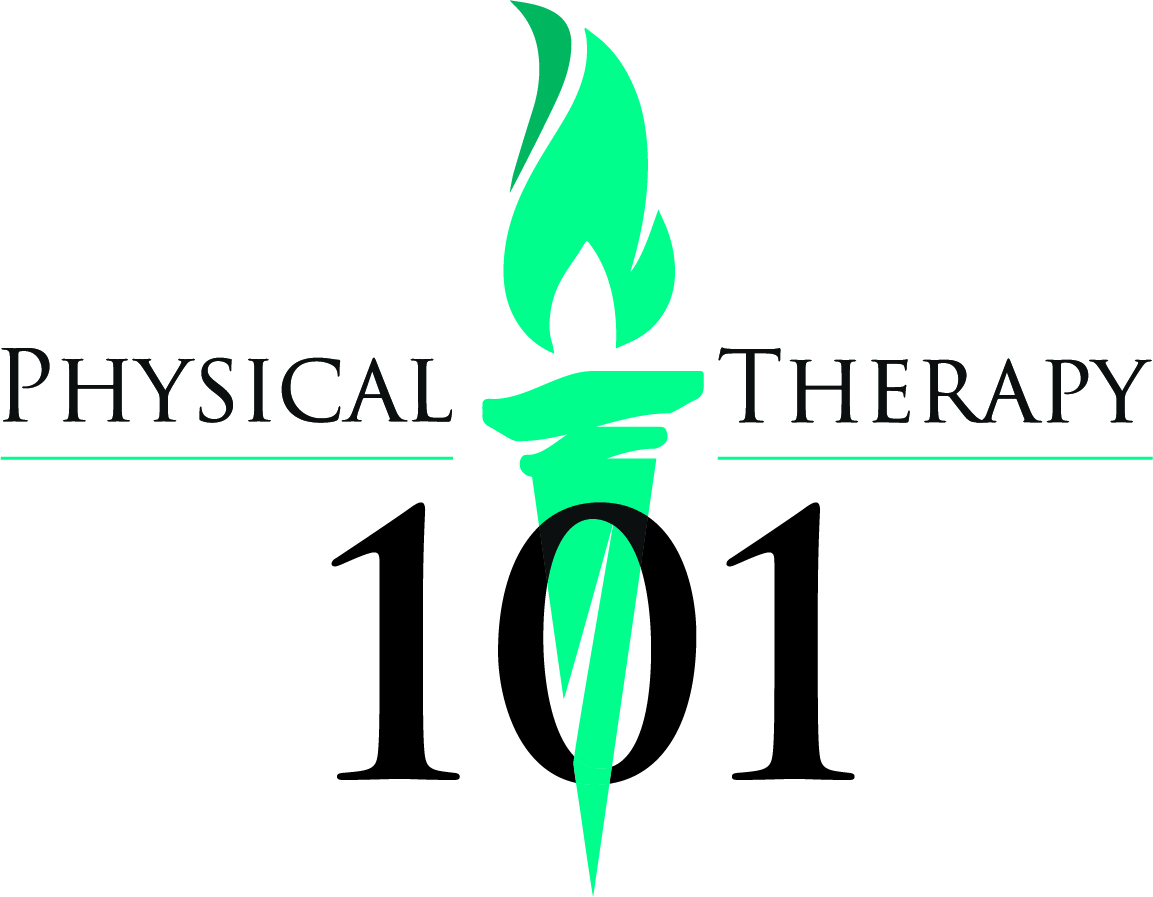Background
The rotator cuff is a group of four muscles and their tendons located in the shoulder. The first muscle is the supraspinatus and its location is over the top of the head of the humerus.
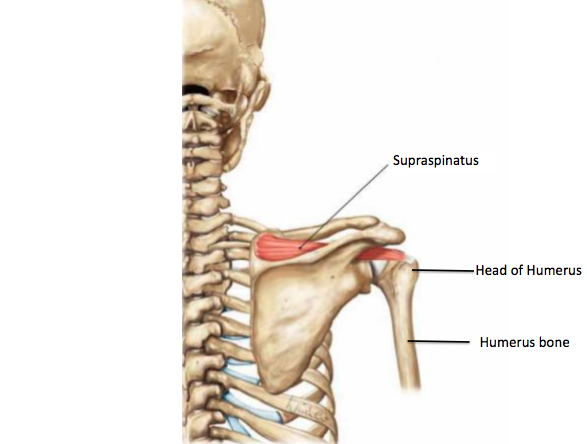
The subscapularis muscle is located across the front of the head of the humerus.
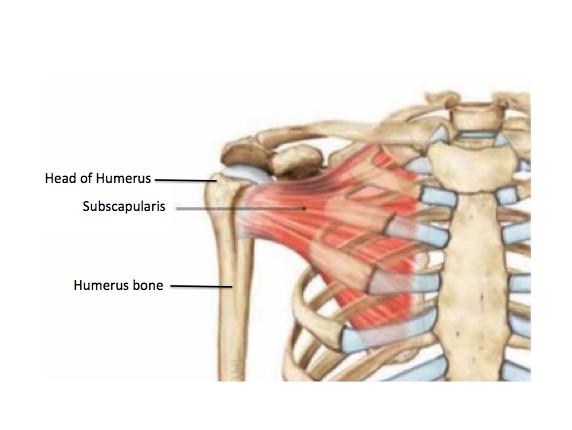
Finally, the infraspinatus and teres minor both are located and run across the back of the head of the humerus.
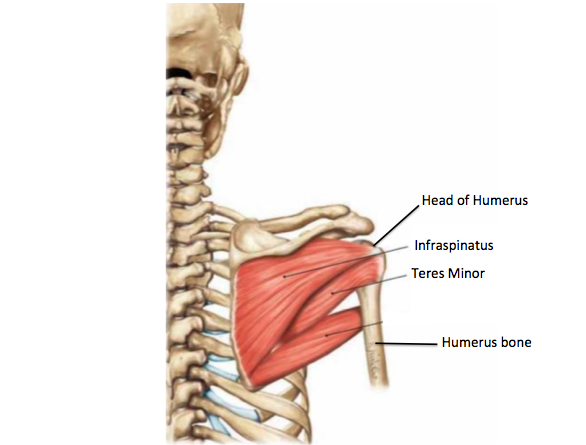
The main role of the rotator cuff is to control the movement of the shoulder and to provide stability to it. This is essential for optimal movement in all planes of motion.
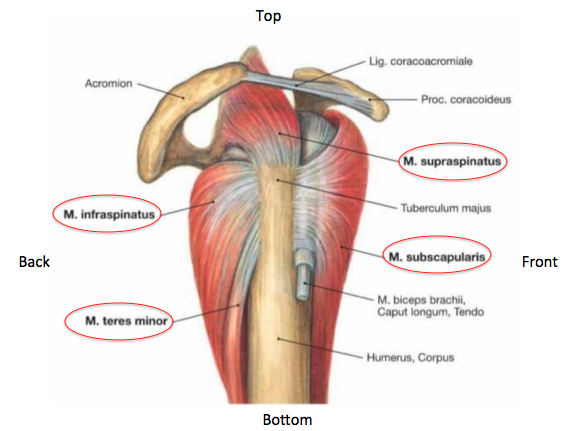
Injury to the rotator cuff can occur due to wear and tear from everyday activities, sports, or through traumatic injury. A rotator cuff injury usually causes pain and weakness in the shoulder and can be treated via surgical intervention or conservative management. If surgery is chosen, typically a person will be immobilized in a sling afterwards such as below.
The duration of that immobilization will vary depending on several factors. If conservative management is chosen, it is important to perform exercises to restore a patient's range of motion and strength in the shoulder.
More Information:
Eagles Wide Receiver Alshon Jeffery Played Every Game with Torn Rotator Cuff in 2017-2018
Recommended Products
Treatment - Stretching
A good way to warm up is to perform passive pendulum exercises. Hold a light dumbbell in your involved side hand and swing your body from side to side. The motion of your body should passively swing your arm. 15-20 swings in each direction are adequate. Next, swing your body front to back, again, allowing your arm to passively follow. A clockwise then counter-clockwise motion will be done last. Again, make sure your arm swings passively, done so by the active motion of your body.
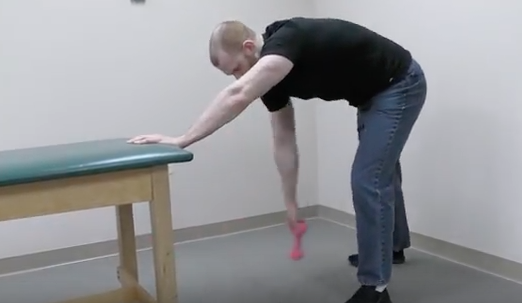
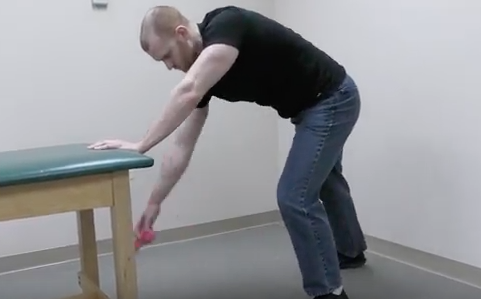
Pulley stretches are the next best progression. Hang your pulleys over the top of the door. Place your chair facing away from the door. If too difficult, try facing your chair towards the door. This should make it easier. In this case, his right arm is the involved arm. Start with stretching the involved arm directly in front for Flexion, then midway for Scaption, then all the way to the side for Abduction. Pull down with the uninvolved arm. Hold each stretch for 10 -15 seconds and repeat 3-4 times.
Flexion
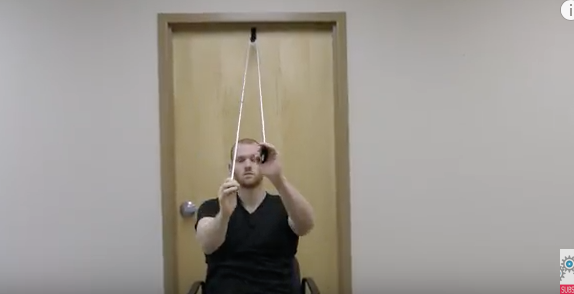
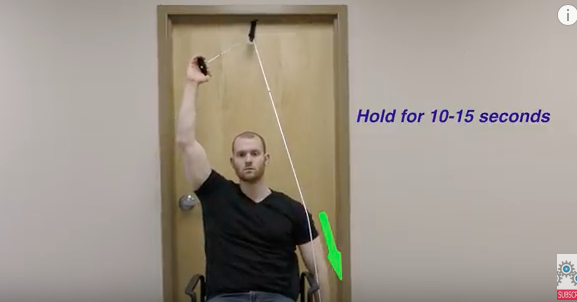
Scaption
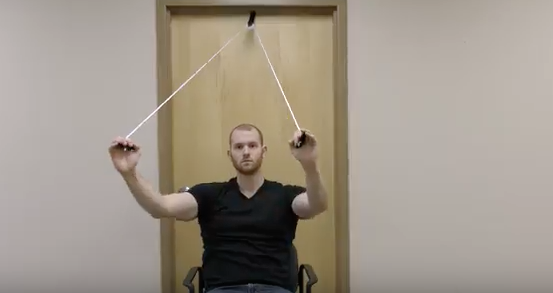
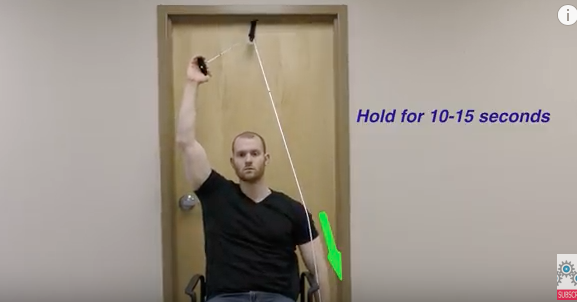
Abduction
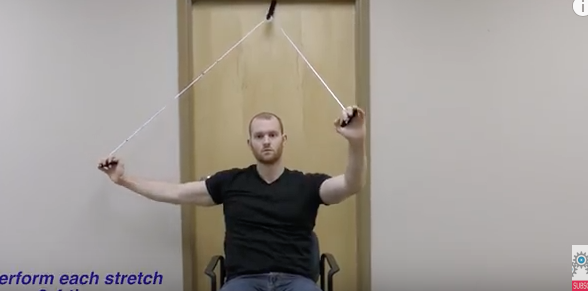
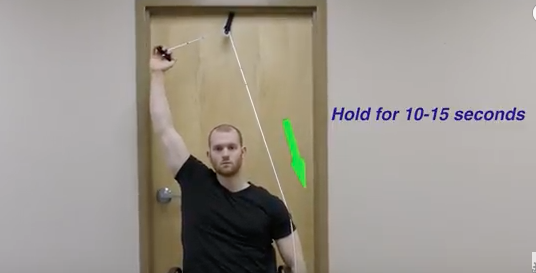
The next stretch is known as a Prayer Stretch. Kneel down on a yoga mat or therapy table and drop your backside to your heels. Bend forward and lean your chest to your thighs. Walk your hands out in front of you as far as you can. Hold for 10-15 seconds and repeat 3-4 times.
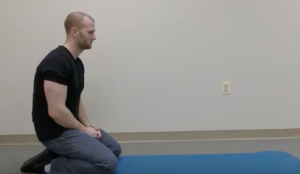
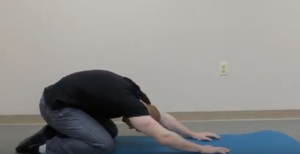
Next, find a doorway and place your arms on the outer frame of the door. Walk your feet forward and/or lean into the door opening to feel the stretch. Moving your arms up or down will change the angle of the stretch slightly. Hold for 10-15 seconds and repeat 3-4 times.
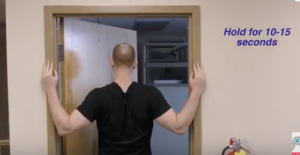
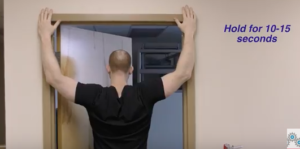
A towel stretch is a great Internal Rotation stretch. In this case, his involved arm is the right arm. Again, hold each stretch for 10-15 seconds and repeat 3-4 times.
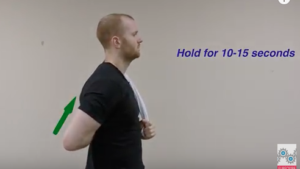
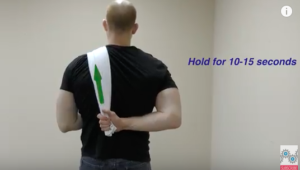
The Sleeper Stretch is another great internal rotation stretch. It is done by lying on your side on a yoga mat or therapy table. Be sure to support your head on a pillow and make sure to keep your elbow out. Do not tuck it in by your body. Push your arm down and hold for 10-15 seconds. You should repeat this 3-4 times.
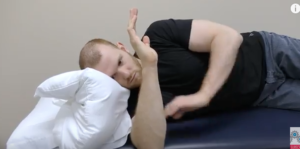
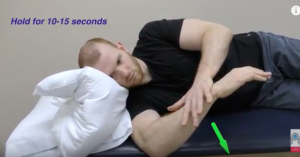
A good External Rotation stretch is to use a broomstick or a cane. Lie down and push the arm that you are stretching into an outward rotation. Try it first with your elbow by your side.
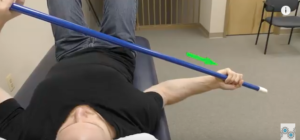
Then progress by moving your elbow out. Remember to hold each stretch for 10-15 seconds and repeat 3-4 times.
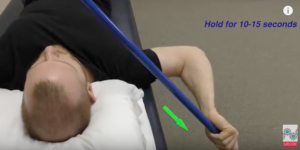
Products to Help with Strengthening Treatment
Treatment - Strengthening
You should use the muscles in the shoulder to mimic an Internal Rotation motion without moving the joints, this is known as an isometric exercise. Push into the wall as if you were going to do the abovementioned motion. Of course, the wall does not allow any motion, but the muscle still contracts. Apply light to moderate pressure and hold each push for 3-5 seconds. Repeat 5-10 times.
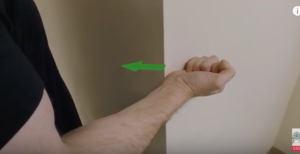
Next, do the same thing but push into External Rotation. Make sure you push out at the hand, not the elbow. If the wall did not stop you, your hand would swing out, like you're hitchhiking, and your elbow would hinge at your side. Apply light to moderate pressure and hold each push for 3-5 seconds. Repeat 5-10 times.
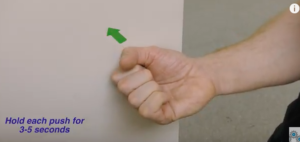
To progress, lie on your side and tuck elbow in by your body on a yoga mat or therapy table. Use a light dumbbell to rotate in for Internal Rotation, then slowly back out. Be sure to keep your head supported on a pillow. Build up to 3 sets of 8-10 repetitions.
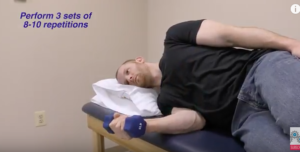
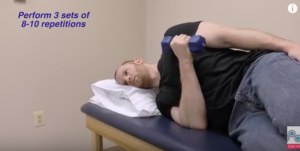
For External Rotation, turn over so the arm you're exercising is on top. Start with the dumbbell in next to your body, then rotate outward. Remeber, make a hitchhiking type of motion and do your best to keep your elbow by your side. Build up to 3 sets of 8-10 repetitions.
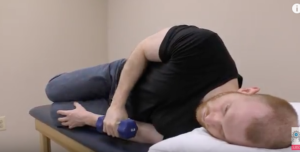
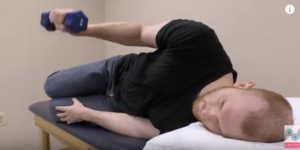
Next, move into position to perform a series of I's, T's, Y's, and W's exercises on a yoga mat or therapy table. The I's are done by extending the arms overhead while lying prone. It is recommended to place a towel between your forehead and the surface for neck support. Your body shape should look like the letter I. To begin, depress your shoulder blades down like you are trying to put them into your back pockets. Hold them down as you lift your arms overhead. The direction of your thumbs should be up. Build up to 3 sets of 8-10 repetitions.
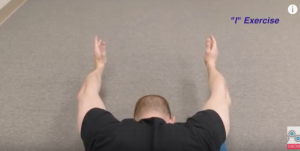
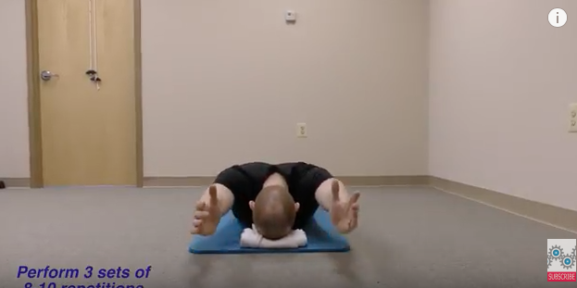
T's are similar to I's but move the arms moved out so they are 90 degrees to the body. This time pinch the shoulder blades together while depressing them downward. Left the arms up then slowly back down. Make sure to keep the thumbs up. Remember, you should look like the letter T. Build up to 3 sets of 8-10 repetitions.
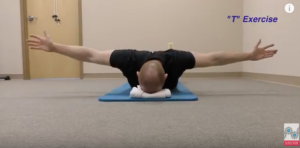
Y's are done by moving the arm's starting position between the I and T starting position. Repeat the same sequence as before, but make sure to keep your Y shape as you go through the motion. Build up to 3 sets of 8-10 repetitions.
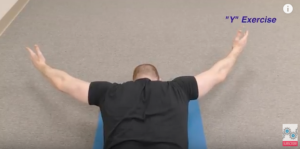
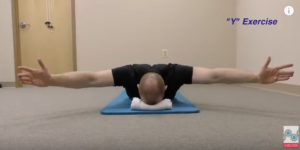
Lastly, W's are performed by bending your elbows making your arms appear to be in the shape of the letter W. Repeat the same sequence as before and build up to 3 sets of 8-10 repetitions.
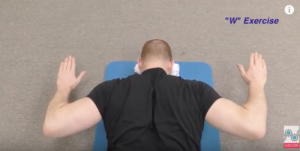
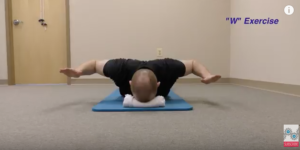
Rows can be done by making a knot in an elastic band and closing it in a door. Make sure to put the knot in the middle of the band so the ends are even.

Elicit the correct muscles by pinching the shoulder blades together as you pull the elbows out and back. Build up to 3 sets of 8-10 repetitions.
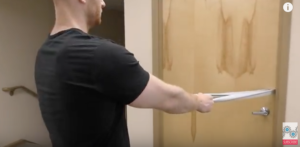
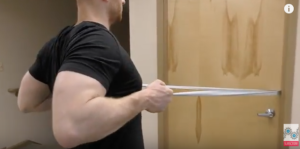
Another good Rotator cuff exercise is called Bear Hugs. While holding your band, bring your arms around like you are giving out a big Bear Hug. With both Rows and Bear Hugs, if you need more resistance, step further away from the door. Again, 3 sets of 8-10 repetitions is your goal.
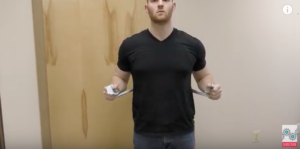
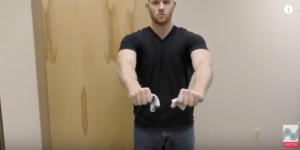
Lie on your back to perform Serratus Punches. Move your arm to 90 degrees, where it is straight up. Start with a light dumbbell and "punch" straight up towards the ceiling, then slowly come back down. Make sure to keep your elbow locked out and your arm is fully extended. Like the others, build up to 3 sets of 8-10 repetitions.
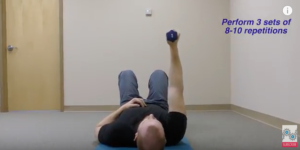
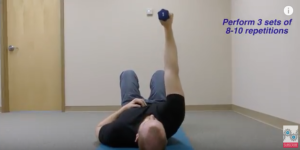
An advanced Serratus muscle exercise is to start prone on a yoga mat or therapy table with your elbow by your sides with your palms up. Lift your body up by moving your shoulder blades apart then slowly lower yourself back down by controlling their retraction. This is advanced so only attempt this after you have mastered the others.
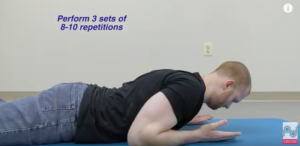
The Biceps Brachii muscle supports the rotator cuff and are wise to exercise when the focus is on the cuff. Pick a dumbbell that is easy to manage, but more difficult on the last few reps. Alternate your arms making sure to turn the palms up when you come up, then back to neutral when you come down. Remember to build up to 3 sets of 10 reps.
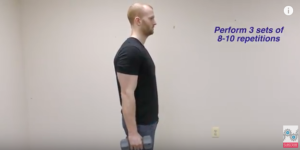
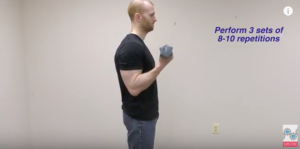
References
Physiopedia. 2018. File:Muscles Rotator Cuff.jpg. [ONLINE] Available at: https://www.physio-pedia.com/File:Muscles_Rotator_Cuff.jpg. [Accessed 23 March 2018].
